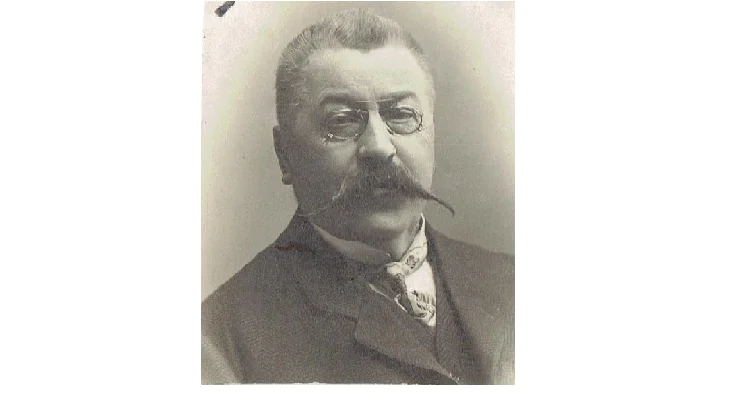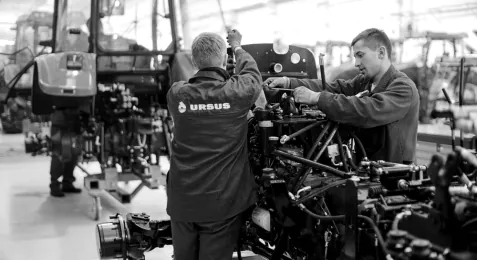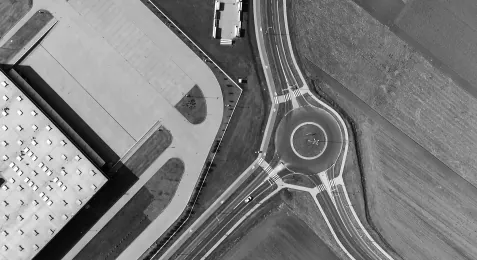Lublin Info Centre
Wilhelm Hess – the owner of the largest scale factory in Poland
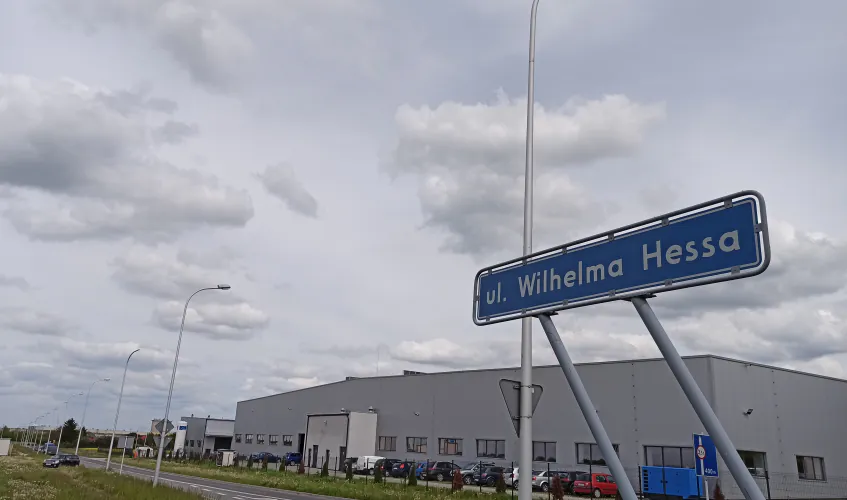
The story of the founder and his life’s work
Wilhelm Hess was born in 1848 in the Czech Republic. At the age of 15 he moved to the United States, where he worked i.a. at scales manufacturing plants in Chicago and Buffalo. After he had married his compatriot Elżbieta née Ciżków, he decided to return to his homeland. The Hess family found themselves in Lublin somehow by accident. On the way to Kiev, where Wilhelm wanted to develop his career aspirations, the Hess family was forced to make a stop in Lublin due to their daughter’s illness.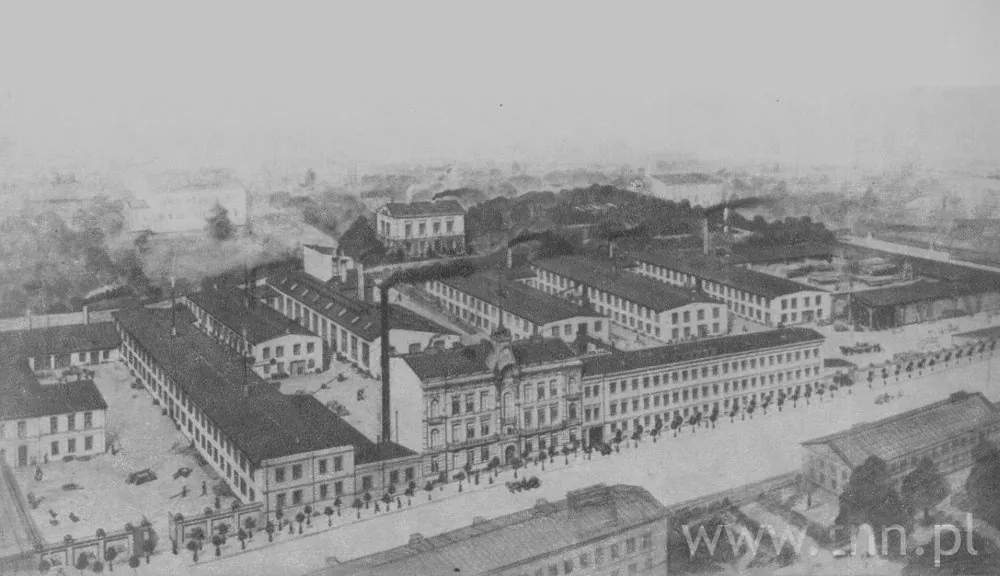
Lublin. W. Hess scale factory at Lubartowska Street. Author: unknown. Source: Teatr NN
In order to provide for his family, W. Hess had opened a business specialized in repairing scales at Ruska Street, shortly afterwards using the experienced that he gained in The United States, he started producing them. In order to gain the land to built the factory, in 1878 Hess bought the property located on Lubartowska street and in the following years, a series of other properties located on both sides of Lubartowska Street that previously had belonged to Jewish entrepreneurs. The production of scales began in 1879, when there was still a carpentry shop and a forge. In 1884 Hess had applied for permission to build a factory. The bronze medal that he received at an industrial exhibition worked as a sort of recommendation that helped him to obtain the required permission. At the end of the 19th century, numerous factory buildings housed: a locksmith shop, foundry, carpentry shop, forge, mechanical department, pattern shop, assembly shop, paint shop, boiler room, as well as depots and warehouses.
The factory in its heyday
The expansion of the factory that dates back in 20th century quickly lead to the development of production. In 1909, Wilhelm Hess brought an electrical installation to the factory. Until 1912, the facility No. 60 and 62 was built. The production technology was fundamentally changed as the new applications such as modern presses as well as punching and embossing devices were implemented
In its heyday, i.e. in the period from 1910 to 1914, in the factory, covering an area of approx. 10 ha, were employed up to 1,200 people, working in a single shift from 12 to 14 hours a day. Until 1912 though due to the demands of employees, working hours were reduced to 9 hours, what is more the salaries were increased from 10 to 25%, and the employees were given a permission to establish a Trade Union of Metalworkers. Additionall, the factory provided its workers with free access to medical care. There were also facilities such as canteen, a cheap shop and a credit union.
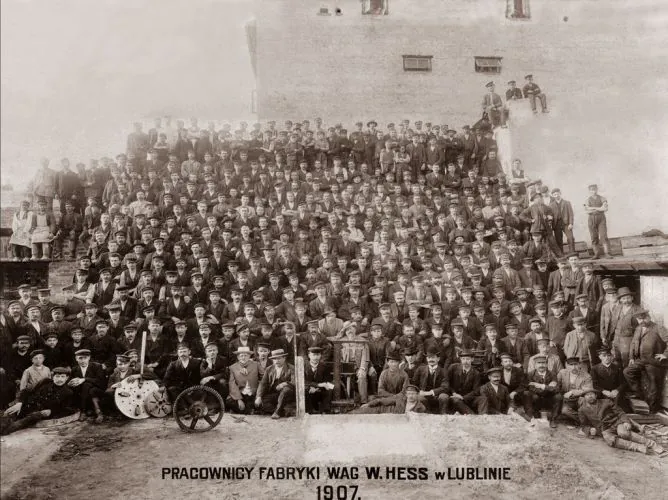
Workers of W. Hess scales in Lublin. 1907. Source: Lubelskie Fabryki Scales FAWAG S.A.
In the factory were produced decimal, hundredth, clinical and pharmacy scales as well as scales designed for large customers, such as truck, rail, storage, portable scales for the army, transportable scales on wheels which were widely recognized for their quality and modernity, At the peak of production capacity, several thousand scales were produced per month. The financial soundness of the company allowed Wilhelm to open new branches in Berdyczów, Smolensk and Ekaterinoslaw.
The factory owed its success to an efficient management structure. In the applied model, most decisions related to finance, marketing, production and work organization were made by the founder and owner himself, Wilhelm Hess. He was directly subordinate to the accountant, the masters of individual departments responsible for the organization of production and quality control, and to other selected workers. In 1913, the factory was transformed into a joint-stock company. 200 shares with a value of PLN 200 each were issued, however, 91% of shares remained in the hands of Wilhelm Hess. The factory’s products won several medals and awards at national and international exhibitions.
The war and post-war period
The period of prosperity was distorted by the First World War outburst. Approximately 60% of the whole factory equipment was exported by The Russians. Additionally, in 1920 fire consumed some of the buildings. In 1927, the factory resumed its operations as a joint- stock company taking out a loan of PLN 400 000 from ‘Miejskie Towarzystwo Kredytowe’. Unfortunately the global crisis of the 1930s and limited access to raw materials as well as new markets, plunged the Wilhelm Hess Scales Factory. Its founder didn’t have the chance to see it though, he died in the in 1932 in Czech Republic, shortly before the factory declared its bankruptcy.
In the interwar and post-war period, the factory was run by numerous owners. First, due to problems with loan repayments, the factory was formally taken over by the Credit Society. In 1934, Wilhelm’s son, Karol Hess made an unsuccessful attempt to restart the factory’s activity, that at that time was known as ‘W. Hess Scales Factory’. Before World War II, the factory, functioning under the same name was run by the Krzykowski brothers from Warsaw. During the occupation though, the factory was taken over by the Germans. After the war, the plant had returned to the Krzykowski family for a short time, until 1948, when the company was nationalized under the name ‘Specjalna Fabryka Wag No. 2’
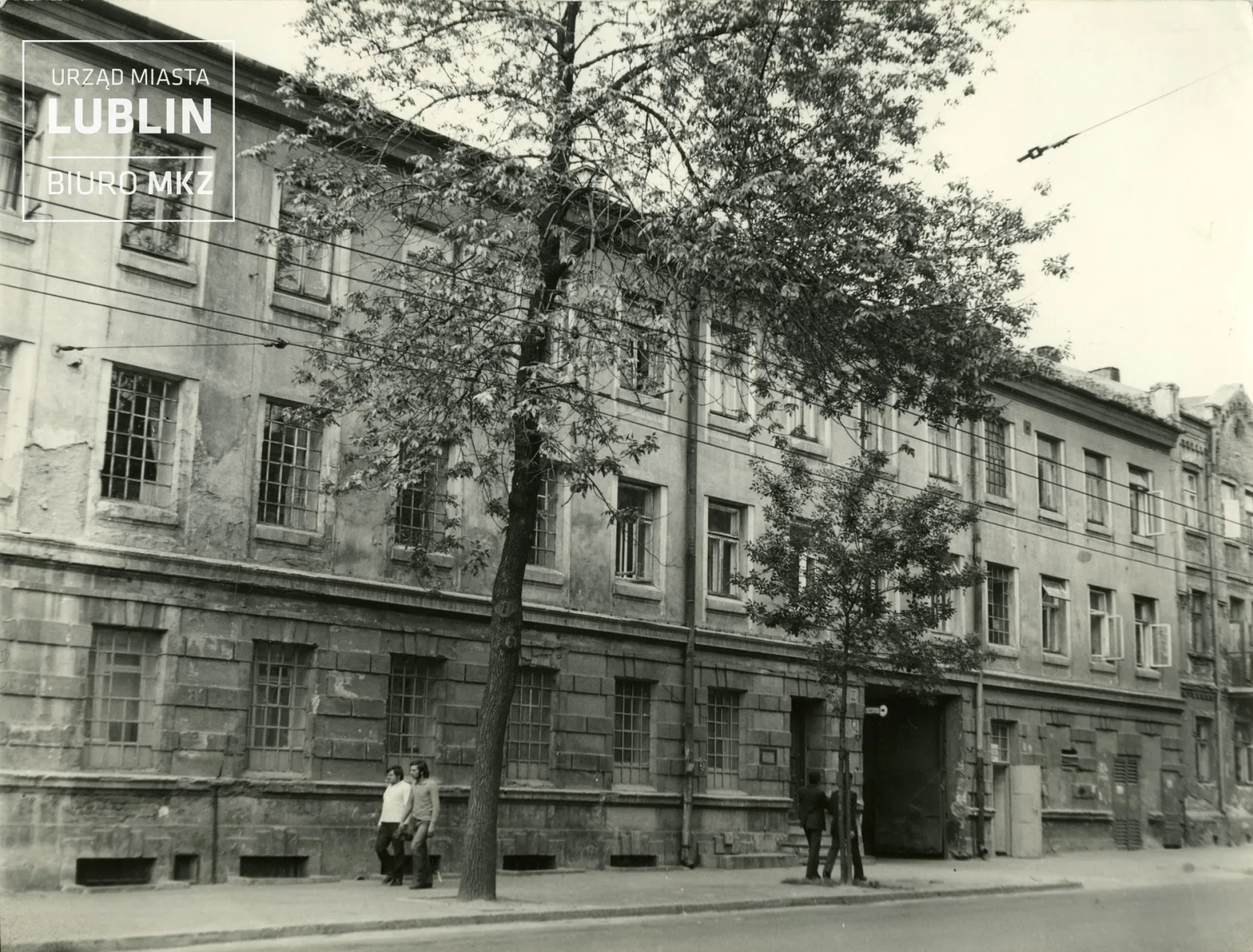
Building of the Scales Factory W. Hess (Author: unknown). Source: Teatr NN
On May 1, 1951, the company Lubelskie Fabryka Wag was established by merging three plants producing scales:
• W. Hess Scales Factory, existing since 1879
• The Wag Ideal Factory established in 1906
• J. Caudra Scales Factory established in 1932
In 1996, the enterprise was transformed into a sole-shareholder company of the State Treasury, and in 2014, Posnet Polska S.A. acquired 100% of the shares and became the sole owner of the factory.
Scales factory in Lublin at present
Only a few factory buildings along the western frontage of ul. Lubartowska have been preserved. In place of the factory there were established Provincial Dental Hospital, Department of Biochemistry of the Veterinary Faculty of the University of Life Sciences, Spółdzielnia Pracy Przemysłu Spożywczego “Solidarność”. The former factory facilities were entered in the Register of Monuments. There are no original production equipment inside though
Currently, Lubelskie Fabryki Wag FAWAG S.A. continue the 140-year tradition of the W. Hess plant in Lublin at ul. Łęczyńska 58.
The commercial offer of the Company includes dozens types of scales, including:
• Electronic: shop, calculation, labeling, multifunction (including counting), bridge, industrial.
• Special: dosing, queuing, car,
• Automatic
In 1999, “FAWAG” S.A. was the first company to produce scales with the ISO 9001 quality assurance system, Additionally in 2006 the factory obtained a certificate of compliance with the requirements of OIML (International Metrological Organization).
FAWAG has written another page in its history. Under the wings of Posnet, one of the largest producers of fiscal devices, the Lublin-based company promotes the WS-1 electronic scale, which has become the number one among modern scales that can communicate with other devices, and at the same time are easy to use. In addition to the electronic scale WS-1, FAWAG has introduced the FAWAG Lite and FAWAG Lite Online cash registers to its offer.
The FAWAG Lite, FAWAG Lite Online cash register and the WS-1 scale are products that mark a new release of Lublin-based company, where experience and history are combined with modernity and innovative technology.
Sources:
Galeria. Centrum Informacji Naukowo-Technicznej Politechniki Lubelskiej
